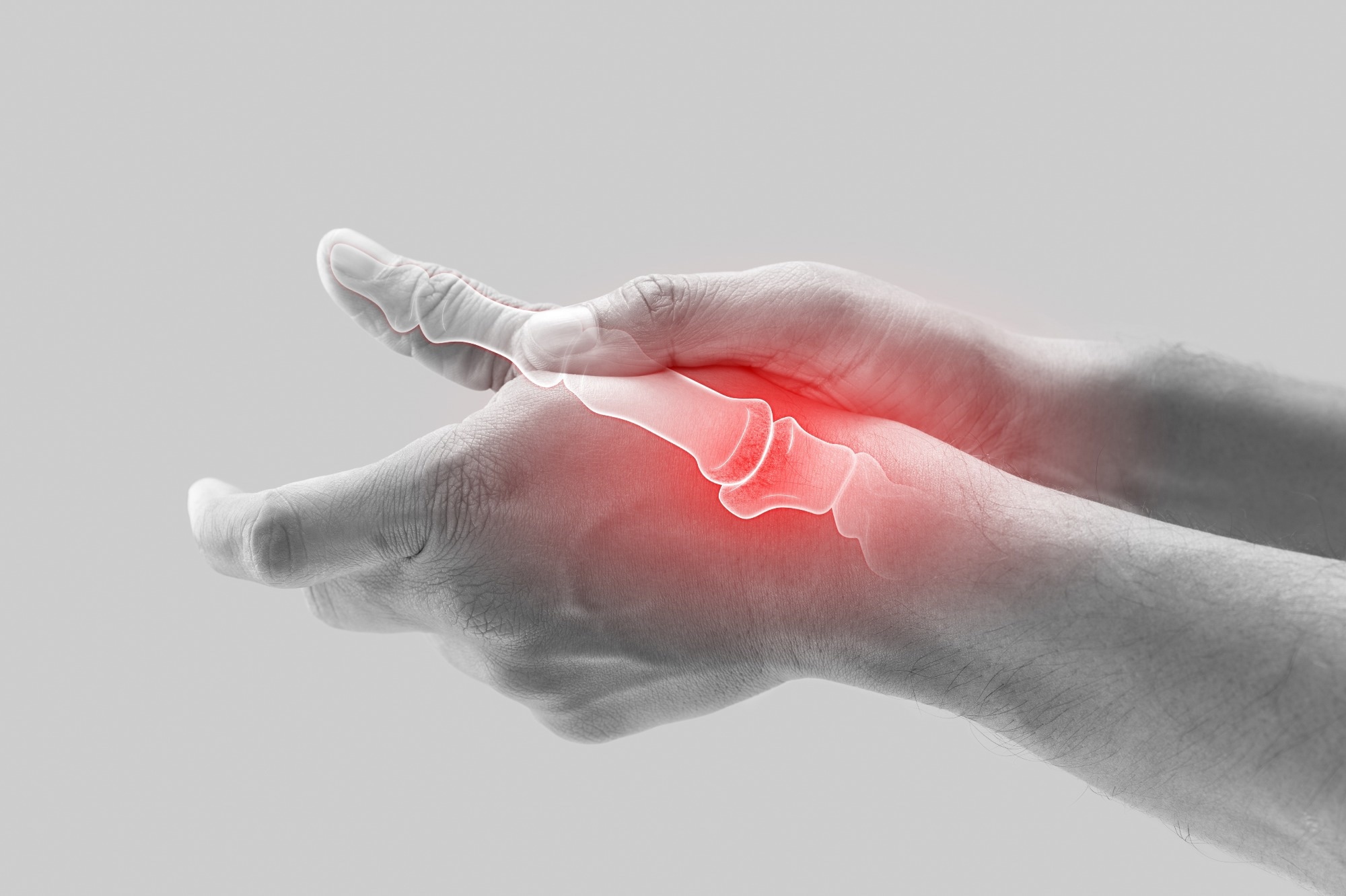The causal relationship between osteoarthritis (OA) and vitamin E status remains unclear to date. A recent Scientific Reports study explores the association between OA and circulating α-tocopherol levels, the main form of vitamin E in the body, using Mendelian randomization (MR) analysis.
 Study: No genetic causal association between circulating alpha-tocopherol levels and osteoarthritis, a two-sample Mendelian randomization analysis. Image Credit: Emily frost / Shutterstock.com
Study: No genetic causal association between circulating alpha-tocopherol levels and osteoarthritis, a two-sample Mendelian randomization analysis. Image Credit: Emily frost / Shutterstock.com
Vitamin E and OA
OA is a progressive degenerative joint disease that is primarily associated with the deterioration of articular cartilage. As a result, OA can lead to significant disability in performing daily activities, thereby reducing the quality of life in affected individuals. To date, total joint replacement remains the only effective cure for OA.
Vitamin E is a powerful antioxidant and lipid-soluble vitamin. Moreover, vitamin E comprises eight forms, including four tocopherols (α, β, γ, and δ) and four tocotrienols (α, β, γ, and δ). The two primary forms of vitamin E in the body include α- and γ-tocopherol.
In OA, oxidative stress is a key mechanism contributing to joint degeneration. Previous studies have attributed vitamin E's role in OA to its antioxidant and anti-inflammatory effects.
In a rat model, rat mesenchymal stem cells (MSCs) were protected from hydrogen peroxide-induced oxidative stress by vitamin E, which subsequently mitigated OA symptoms. Despite these observations, the association of OA and vitamin E in clinical studies has been controversial.
About the study
MR analysis utilizes genetic variations to determine causality between exposure and outcome variables. To this end, MR analysis was used in the current study to assess any causality between OA and α-tocopherol levels.
The study cohort included 7,781 individuals of European descent from a genome-wide association study (GWAS). Three single nucleotide polymorphisms (SNPs), including rs964184, rs2108622, and rs11057830, that were strongly associated with circulating α-tocopherol levels were identified. Confounding factors such as age, cancer status, and cholesterol level were considered in the final analysis.
Clinically diagnosed OA was the primary outcome variable and was identified based on imaging evidence or joint arthroplasty recommendations. A second outcome of OA was derived from the United Kingdom Biobank.
Study findings
The MR analysis results were not supportive of a causal relationship between OA and circulating α-tocopherol levels in the study cohort. They did not significantly differ between men and women. Based on these findings, the researchers concluded that α-tocopherol levels may not lead to beneficial outcomes for mitigating the progression of OA.
Previous in vitro experiments have reported a beneficial effect of vitamin E or α-tocopherol levels on OA. Moreover, animal experiments have shown the favorable impact of vitamin E on joint degeneration.
Comparatively, a Japanese study reported a negative association between knee OA and vitamin E after controlling for confounding factors. Considering the evidence holistically, the causal relationship between vitamin E status and OA remains inconclusive.
Strengths and limitations
A key strength of the current study is the use of MR analysis, which reduces the impact of confounding factors and reverse causality of using genetic variation by assigning SNPs randomly at conception. Another strength of the study is the use of a large GWAS dataset for the MR analysis.
Two large datasets confirmed the validity of the study findings. Furthermore, subgroup analyses by gender revealed similar findings, and the sensitivity exercises were consistent in removing SNPs.
A notable limitation of the current study is the omission of γ-tocopherol, which is another primary form of vitamin E in the body. Additionally, only three SNPs corresponded to circulating α-tocopherol levels, which could affect pleiotropy detection by MR Egger regression. Therefore, future studies should use more instrumental variables and updated GWAS data to verify the study findings.
Another limitation involves the use of a linear MR analysis to assess causality between OA and circulating α-tocopherol levels. A threshold effect may also be present for α-tocopherols; therefore, non-linear MR analysis should be utilized in future studies to validate these observations. The generalizability of the current findings to other diverse populations is also limited, as the study cohort exclusively included Europeans.
Conclusions
The MR analysis failed to identify a causal relationship between OA and circulating α-tocopherol levels. Nevertheless, additional MR analyses based on more instrumental variables and updated GWASs are warranted to verify these findings.
Journal reference:
- Cui, A., Xiao, P., Wang, P., et al. (2024) No genetic causal association between circulating alpha-tocopherol levels and osteoarthritis, a two-sample Mendelian randomization analysis. Scientific Reports 14(1);1-8. doi:10.1038/s41598-024-60676-5